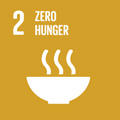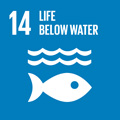- Docente: Alessandro Seguino
- Credits: 4
- SSD: VET/04
- Language: Italian
- Moduli: Alessandro Seguino (Modulo 1) Federica Savini (Modulo 2)
- Teaching Mode: Traditional lectures (Modulo 1) Traditional lectures (Modulo 2)
- Campus: Bologna
- Corso: Single cycle degree programme (LMCU) in Veterinary Medicine (cod. 8617)
-
from Sep 18, 2024 to Nov 06, 2024
-
from Oct 16, 2024 to Dec 12, 2024
Learning outcomes
During the course, the student acquires theoretical-practical knowledge of the inspection methodologies and regulations that will guide him in the inspection, control and certification of foods of animal origin. At the end of the module, the student, with autonomy of judgement, is able to deal with the inspection problems that he will encounter in his activity as an Official Veterinarian; it is also able to recognize and certify foods that are healthy and suitable for human consumption.
Course contents
This course is part of the C.I. of "Food Inspection, Control and Certification", the verbalizing teacher is Prof. Alessandro Seguino.
The course consists of two modules.
Module 1: consists of frontal lessons and practical lessons. Teacher Prof Alessandro Seguino
a. Lectures (20 hours)
The lectures are dedicated to explaining the Official Controls that are applied to verify compliance with the rules on the protection of animal welfare during transport and slaughter, and good hygiene practices for the slaughter and cutting of the main species of farm animals (domestic ungulates and poultry), starting from the transport of animals to the slaughterhouse up to the marketing of fresh meat. Furthermore, the Official Controls that apply to the production of table eggs and egg products from primary production to distribution will be explained. The following topics will be addressed:
• Ante-mortem and post-mortem inspection of the main species of farm animals and on the inspection judgment of fresh meat,
• The identification of animals intended for human consumption and their traceability along the food chain,
• The audit of good hygiene practice procedures at slaughter and cutting, and the prevention of contamination of fresh meat by physical, chemical and microbiological hazards.
• Audit of procedures relating to the protection of animal welfare during transport and slaughter.
• Audit of good hygiene procedures relating to the production of table eggs and egg products.
• The inspection procedures that apply to table eggs and egg products.
b. Practical lessons (4 hours)
Practical lessons are carried out in groups in the necropsy room with animal viscera and other educational material (images of organs with pathologies relevant for meat inspection). Students must bring their own gown, other PPE will be provided by the teacher. The following topics will be addressed:
• Review of basic, comparative and topographical veterinary anatomy of domestic ungulates and the main macroscopic characteristics of healthy meat.
• The practical methodology and techniques of post-mortem inspection of domestic ungulates based on current health legislation.
• The veterinary pathological anatomy of domestic ungulates relevant for the inspection of fresh meat.
• Recalls on how to recognize the main parasitological lesions of inspection interest.
• Risk assessment and the application of the decision-making and regulatory process to declare meat unfit for human consumption, and the classification and disposal of animal by-products.
Module 2: consists of frontal lessons and practical lessons. Teacher Dr Federica Savini
a. Lectures (20 hours)
The lectures are dedicated to deepening knowledge relating to the identification of the main fish species of commercial interest, the topic of chemical and microbiological dangers of fish products, as well as the most widespread non-conformities of over-the-counter fish products. Topics relating to:
• Introduction to the course and the fish supply chain,
• Systematics and recognition of fish species, molluscs and crustaceans of commercial interest,
• Identification of poisonous and poisonous fishery products,
• Qualitative characteristics of fish products and freshness indicators,
• Labelling and traceability of fishery, aquaculture and bivalve mollusc products,
• Assessment of the suitability for consumption of fishery products: tasks of the food business operator and the competent authority,
• Microbiological and parasitological controls of bivalve molluscs,
• Zoonoses associated with the consumption of fishery products,
• Insights into chemical contaminants of inspection interest in fish products,
• Main commercial and health frauds in the seafood supply chain.
b. Practical lessons (4 hours)
Practical lessons are carried out in groups with fishery and aquaculture products and other educational material (images and related documentation). Students must bring their own gown, other PPE will be provided by the teacher. The following topics will be addressed:
• References to basic veterinary anatomy of fishery and aquaculture products and species recognition,
• The practical methodology of recognizing the freshness of fishery and aquaculture products,
• Looking for zoonotic parasites.
To better understand the concepts and contents of the "Food Inspection, Control and Certification" course, students are strongly advised to review the notes of the second year "Food Hygiene and Technologies" course and in particular for what concerns the food safety management and the HACCP system, and the origin of microorganisms that cause foodborne illnesses.
Readings/Bibliography
Module 1:
- Material provided by the teacher (slides of the lectures and practical lessons in PDF format) and available on the appropriate Virtual website.
- Book: Manuale di ispezione e controllo delle carni. Autori: Stella - Scanziani - Ghisleni (2023)
Module 2:
- Material provided by the teacher (slides of the lectures and practical lessons in PDF format) and available on the appropriate Virtual website.
- Manzoni P., Tepedino V. (2008) Grande Enciclopedia illustrata dei Pesci, editore Eurofishmarket Castel Maggiore BO
- Manzoni P. (2011) Grande Enciclopedia illustrata dei Molluschi, crostacei ed echinodermi, editore Eurofishmarket, Castel Maggiore BO
- Autori Vari (a cura di Colavita Giampaolo). Igiene e tecnologie degli alimenti. Le Point Vétérinaire Italie [https://www.ibs.it/libri/editori/le-point-v%C3%A9t%C3%A9rinaire-italie], 2023
Teaching methods
Frontal and Practical classes
Assessment methods
The verification and evaluation of learning is carried out through an end-of-course exam. The end-of-course exam aims to evaluate the achievement of the main educational objectives of the course: (1) explain the terminology used in food safety and being able to express oneself correctly; (2) apply the hygiene, health and animal welfare parameters set by the legislation; (3) assess the methods of slaughter of the main species of livestock animals; (4) be able to analyse production processes and correctly identify the critical issues of a process and the methods to ensure its management; (5) apply the basic principles relating to the inspection of table eggs and egg products.
The End of Course exam consists of a written test (a) and an oral test (b). The written and oral tests contribute 50% each to the final exam grade (100%) expressed out of thirty.
a) Written test
The main purpose of the written test is to evaluate whether the student has adequate knowledge relating to the contents covered in the course, and problem-solving skills (Modules 1 and 2). The written test includes questions relating to Module 1 and Module 2 and is structured as follows:
- 40 Multiple Choice Questions (MCQs) of which 20 MCQs relating to Module 1 and 20 MCQs relating to Module 2.
- The total duration of the written test is 60 minutes (approximately 1 minute and 30 seconds per question).
- The written test is closed book. During the written test, the use of support material of any kind such as textbooks, notes, IT media, etc. is not permitted.
Each multiple choice question has four alternatives and only one correct answer. The score can be 0 (zero) for an incorrect answer or 1 (one) for a correct answer. The answer not given is considered incorrect (score: zero). The grade of the written test (score obtained based on the number of correct answers out of 40 available expressed in thirtieths, for example, a student who achieved a score of 24 correct answers out of 40 will receive a grade of 18/30) will be averaged with the score of the oral exam to obtain the score of the End of Course exam.
b) Oral test
The purpose of the oral test is to verify the learning of the basic notions and the student's ability to apply their knowledge to make the necessary integrated logical-deductive connections. The oral test is divided into two parts:
- Part 1: Module 1 Inspections of fresh meat, eggs and egg products
- Part 2: Module 2 Inspection of fishery and aquaculture products
The oral test is based on questions taken from at least two topics covered during the frontal and practical lessons. The student is asked to contextualize the topics and analyse the reasons that make the application of a certain rule necessary. The teacher can use teaching aids such as images to contextualize the exam question. The criteria for evaluating the acquisition of knowledge/skills are: i) understanding of the student with respect to the individual topics required; ii) ability to connect and compare the different aspects and contents covered; iii) ability to apply theoretical knowledge to a food inspection context; iv) presentation skills and language skills.
The evaluation is expressed with a mark out of thirty for the oral exam. The oral test is passed with a grade of at least 18/30.
Oral exam grade standards:
- A very in-depth knowledge of the topics addressed in the course, together with high critical analysis and connection skills and a sure mastery of specific terminology and excellent practical skills will be assessed with the maximum score (30-30L).
- An in-depth knowledge of the topics addressed in the course, together with good analytical and critical skills and the possession of a secure command of specific terminology and good practical skills will be assessed with good grades (27-29).
- Technically adequate preparation and sufficient analytical ability, even if not particularly articulated, expressed in correct language and discrete practical skills, will produce discrete evaluations (23-26).
- Sufficient preparation and analytical ability, expressed in a barely formally correct language and sufficient practical skills, will determine sufficiency (18-22).
How the final exam grade is made up (100%):
The weight of the different parts for the achievement of the training objectives is represented as follows:
- 50%: written test result (score of the written test expressed in thirtieths).
- 25%: result of the oral test part 1 expressed in thirtieths;
- 25%: result of the oral test part 2 expressed in thirtieths.
Please note: The oral test (Part 1 and 2) is passed with a grade of at least 18/30. The End of Course Exam (written test and oral test) is passed with a grade of at least 18/30. The student has the right to refuse to have the grade of the proposed End of Course Exam recorded, but will have to repeat the End of Course Exam in its entirety (written test and oral test). The teacher taking the minutes is Prof. Alessandro Seguino.
Students with DISABILITIES or DSA will have to contact the teacher to have adjustments to the teaching during the lesson or in the final evaluation phase. They will do this by e-mail, entering in the C/C the reference staff who follow them in the faculty.
Teaching tools
The teaching material consists of current legislation, the material made available to students via the website Virtuale, and a collection of technical and scientific documents made available to the teacher and aimed at carrying out theoretical and practical lessons and in-depth study.
Office hours
See the website of Alessandro Seguino
See the website of Federica Savini
SDGs




This teaching activity contributes to the achievement of the Sustainable Development Goals of the UN 2030 Agenda.
